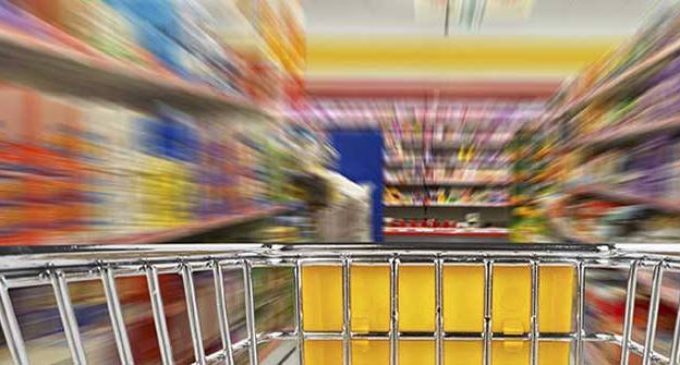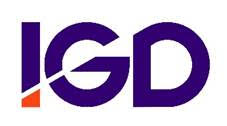Total UK food and drink market moving towards recovery by 2025

The total UK food and drink market is predicted to be worth £315.2 billion by 2028, experiencing a growth of 19% from 2023 (£265 billion), according to a unique new forecast from IGD that presents a combined outlook covering eating in and eating out.
Merging IGD’s sought after UK retail channel and eating out forecasts, the new outlook provides a total picture of the challenges and opportunities across the whole food and drink market over the next five years, including a comparison and breakdown of both sectors.
Forecasted growth for the total market is driven largely by inflation, which IGD predicts peaked in March 2023. However, growth is down in real terms across the total landscape due to the impact the cost-of-living crisis is having on consumer spending, with the eating out sector more impacted as consumers switch to eating at home to save money.
In retail, consumers are also trading down to private label and discount options. By 2025 the market will begin to stabilise as inflation lowers and household disposable incomes rise.
Short-term view: 2023 – 2025
This year has seen a switch back from eating out to eating in as consumers are forced to cut back on spending. Retail has seen a switch from hypermarkets and supermarkets into discounters, convenience and online, as well as down-trading to cheaper products.
 Foodservice is experiencing a bigger decline in the short-term compared to retail as consumers reduce spending or drop out of the market completely. In 2020 the effect of lockdowns showed a switch from eating out to eating in followed by a bounce back in dining out from 2022. But retail has stolen some ‘share of stomach’ back in 2023 as consumers switch more routine and impulsive eating out occasions to eating in, using meal deals and ready meals to satisfy the demand for ease and speed on a lower budget.
Foodservice is experiencing a bigger decline in the short-term compared to retail as consumers reduce spending or drop out of the market completely. In 2020 the effect of lockdowns showed a switch from eating out to eating in followed by a bounce back in dining out from 2022. But retail has stolen some ‘share of stomach’ back in 2023 as consumers switch more routine and impulsive eating out occasions to eating in, using meal deals and ready meals to satisfy the demand for ease and speed on a lower budget.
Long-term view: 2025 – 2028
In the longer term the switch back to eating out will be counterbalanced by an increase in food-to-go options from retailers and additional space and range dedicated to food in larger format stores. By 2028 the real value of the industry will be just shy of pre-pandemic levels, showing the longer-term effects of the pandemic and the cost-of-living crisis on consumer spending appetite and habits out of the home.
Total food and drink via the retail channel
This year the food and drink retail sector will experience an annual growth rate of +15.1% driven by high inflation. Removing inflation from 2023, the market will decline by 2% in real terms as shoppers reduce how much they’re purchasing to save money. 2024 will see a continuation of trading down to cheaper products, such as private label options, and shoppers switching to discount retailers such as Aldi and Lidl. The multiples will look to compete using loyalty schemes, price matching, and own-label price reductions.
Commenting on the outlook for the UK food and drink retail landscape, Global Insight Leader at IGD Bryan Roberts said: “Discounters are playing a big role throughout the cost-of-living crisis as people continue to look for ways to save on their food costs, and this this – plus their store opening programmes – is reflected in their projected growth over the next few years.
“During this period it’s going to be hard for the other channels to compete, however as costs start to level out and shoppers become more comfortable with discretionary spending over time, we will begin to see more multi-channel use. Shoppers will continue to maintain a mixed shopping repertoire, prioritising convenience and experience while continuing with some money-saving behaviours that will have become ingrained by this point. This creates opportunities for other channels, particularly as the timings will coincide with a slow-down in discounter expansion plans.
“While shoppers continue to look for ways to save money, a variety of initiatives such as strong value messaging and loyalty schemes is set to continue in the short-term.”
Total food and drink consumed through the UK eating out channel
2024 is predicted to see modest growth of 4.1% in eating out, primarily driven by price increases lagging behind commodity inflation rates. This will however be offset by a continuing reduction in visits and down trading within the sector. The longer-term view sees hospitality volume growth returning from the beginning of 2025 as real wage growth and consumer confidence improves.
Looking at the challenges and opportunities for eating out over the next five years, senior analyst and sector expert Nicola Knight said: “Eating out will return in line with household income rise in the mid-term, but there will be an expectation from consumers for great experiences and a high-quality offer. Full service will be at a premium, creating a polarisation in the market between treat occasions and everyday QSR missions.
“The short-term view for restaurants will involve consumers using tactics to manage their spending. They will trade down to fewer or smaller courses, dine out at cheaper alternatives, and look for deals and discounts. Restaurants will have to work hard to attract customers back in the long-term, which will include improvements to value and experience, fighting for loyalty, and encouraging people to trade-up on their meals and buy more courses.
“Operators will continue to reduce costs by opting for cheaper ingredients and simpler processes. Businesses that can effectively utilise loyalty scheme data to retain customers will benefit in the long-term, which will help the sector maintain its share of the total eating out market. Drive-thrus, fuel station concessions and leisure locations will also be popular location strategies for QSRs.”
While the long-term outlook for the overall market is fairly positive as the country moves out of the cost-of-living crisis, consumers will still be impacted by a lag in price reductions where food is concerned, due to factors such as wages and the price of commodities. Businesses should therefore be mindful of how they can continue to support consumers in saving money, even as the industry moves towards a state of recovery.
The full report is available to IGD Retail Analysis subscribers:


































